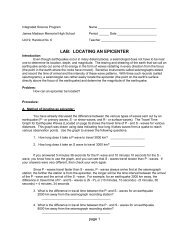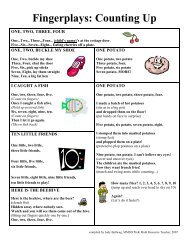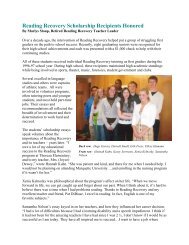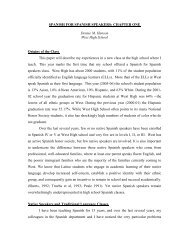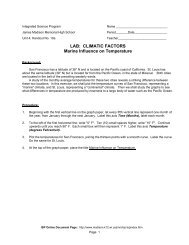The Final Report - Malcolm Shabazz City High School, Madison WI
The Final Report - Malcolm Shabazz City High School, Madison WI
The Final Report - Malcolm Shabazz City High School, Madison WI
You also want an ePaper? Increase the reach of your titles
YUMPU automatically turns print PDFs into web optimized ePapers that Google loves.
Decision Item #10: REDUCE DISTRICT FUNDING OF READING RECOVERY (cont.)Option A: Reduce resources for Reading Recovery by 50%Although the program has a positive impact on reading proficiency withinthe District, it is the highest cost literacy program. A 50% reduction of theprogram would equate to $658,000 in cost savings.Option B:Student Impact:Eliminate the Reading Recovery program.Totally eliminating the program would result in a net cost savings of$1,316,100. This action would release $376,000 of Title I funding for otherpurposes and would eliminate $940,100 from the District budget.Designed to serve the lowest 20% of 1 st grade student in terms of readingachievement, this program serves approximately 325 students per year.This program also indirectly impacts the literacy achievement of studentstaught by those instructors involved in the program as they integrate theprograms learning techniques into the general classroom in while workingin other District literacy programs.If Option A is implemented, the District may find itself allocating themajority of funding for the Reading Recovery program to the same schoolswhich receive Title I funding. This could create a situation whereby “highneeds” students in non-Title I schools may no longer have access to thisprogram.Strategic Priorities: Directly tied to the strategic priorities of Staff Effectiveness and Curriculumand Instruction. (3)Board Priorities:Effectiveness:Directly linked to the goal of all students being able to read at the 3 rd gradelevel or beyond.During the years 1995 through 2000, 85% of students involved in theprogram have obtained an average reading level.<strong>The</strong> argument can also be made that this program has had an indirectimpact on other students. Specifically, training received by teachers andteacher leaders who participate in this program impacts these students astechniques learned through this program are integrated into the regularclassroom. <strong>The</strong> level of indirect impact through integration of thesetechniques can not be directly quantified. However, overall improvementhas been exhibited during the last five year in reading proficiency resultswithin those schools having been involved in this and other District literacyimprovement programs. Specifically, performance on the 3 rd grade readingcomprehension test has shown an overall decline in below standardperformance among ethnic groups during the past ten years. (with theexception of Southeast Asian which has shown a slight increase during thepast year.) In addition, comparison between proficient and advancedreading student %’s show a marked increase in level between the first andsecond grade years. <strong>The</strong> percentage of students proficient or advanced isup district-wide from 76% to 86% between these two grades.In terms of highest priority, elementary principals ranked reading recoveryallocations as an average of 5 out of 20 when ranking allocations.Virchow, Krause & Co. LLP Page 78March 11, 2002



